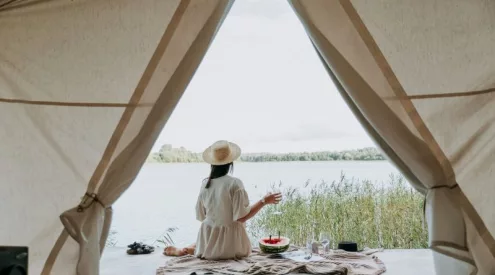The name Agulhas means ‘needles’ in Portuguese, and refers perhaps either to the sharp rocky reefs that have ensnared more than 120 ships along this stretch of shoreline, or more likely, the name was given because the compass points due north, showing no deflection. (I wonder what the local ‘strandlopers‘ would have called this area, more than 100 000 years ago?)
The Portuguese explorer Bartolomeu Dias recorded the first navigation around the cape in the late 1400s, but he initially thought that Cape Point near Cape Town was the southerly most point. Indeed, Agulhas is not nearly as impressive as Cape Point – it’s topographically flat while Cape Point is flanked by steep cliffs.
But Agulhas is far more dangerous for ships. The sea bed here is relatively shallow, and the steep continental shelf only starts about 150 km offshore. The high winds and lack of landmarks on shore – as well as frequent fogs and mists – mean that plenty of ships have run aground here. Survivors would have met local Khoi people, who have lived here and moved through the area for more than 2 000 years, living predominantly off the perlemoen, mussels and fish which is so abundant off Agulhas.
Thandi and I walked west from our chalet at Agulhas National Park for about five km along the beautiful coast to a huge shell midden near some spectacular coastal dunes. The shell midden is huge – over several hundred metres – and we came across piles of ancient, bleached shells – perlemoen (abalone), alikreukel, mussels, limpets, many of which were huge themselves, indicating that this coastline has been incredibly productive for thousands of years. Everything here seems to be big – the sky, the ocean, the seagulls, the kelp beds, the shells, the whales, the wind, the lonesomeness. Some archaeological reports suggest that the Agulhas plain has been inhabited on and off for more than 1 million years…so these shell middens have probably accumulated over several hundred thousand years at least.
One thing, though, that is really interesting, is that the shoreline of Africa – and other continents – is constantly fluctuating. During ice ages, when the polar regions would expand and freeze vast quantities of sea water, the global sea level would have probably lowered by as much as 150 metres, meaning that the southern-most point of Africa would have been about two hundred kilometres further south! So over a million years, the shoreline has been constantly changing location.
It was spring high tide when we arrived at the dunes (its full moon today!), and we were hoping to find the fresh water spring which flows from the bottom of the dunes along the beach into the sea. But the tide was too high, so we couldn’t see it. However, the fresh water spring must have been flowing for several thousand years, as it is probably the main reason the Khoi “strandlopers” congregated here to eat the shellfish.
We came across several fisherman during our walk – they were casting for galjoen, a fish which swims amongst the rocks and kelp during high tides. Their names are evocative – Mr Windvogel, Enver Scheepers, Stompie Bantom – who knows, but their heritage surely includes strandloper, Khoi and Bushmen influences. Today, though, there’s far less to be taken from the sea – commercial fishing and rampant abalone poaching has reduced stocks drastically. The new proposed marine protected area – which would conserve a tract of ocean offshore of the park – is much needed it seems.
For more, go to www.yearinthewild.com and www.facebook.com/yearinthewild. Thanks again to my sponsors for making it all possible. CapeNature, South African National Parks, Ezemvelo KZN Wildlife, Eastern Cape Parks, iSimangaliso Wetland Park, Ford, Total, Evosat, Conqueror Trailers, Vodacom, Digicape, Lacie, Frontrunner, Safari Centre Cape Town, K-Way, EeziAwn, National Luna, Nokia , Goodyear, Global Fleet Sales, Hetzner, Clearstream Consulting and Escape Gear.

















